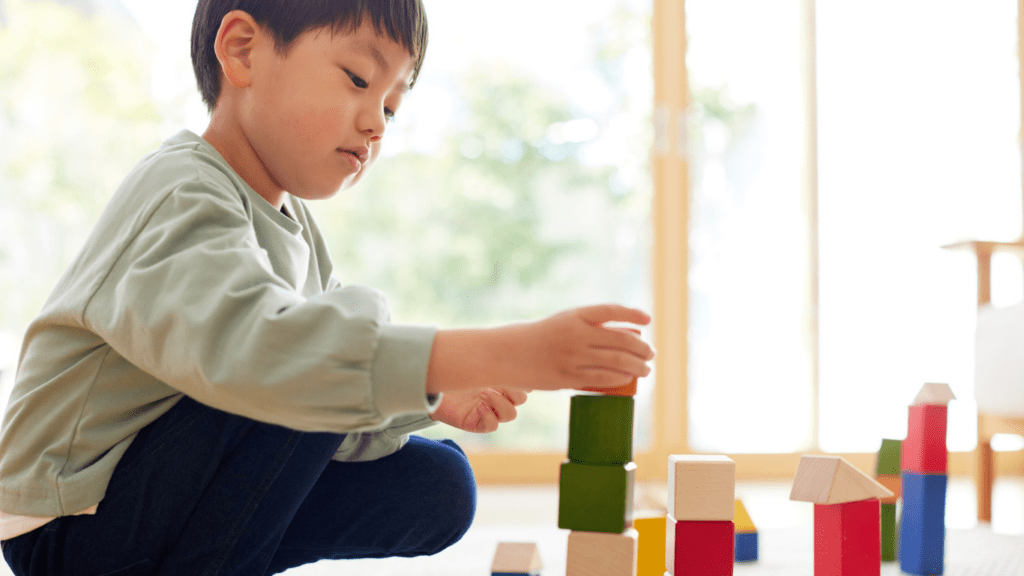As a parent or caregiver, it’s easy to get caught up in the whirlwind of developmental milestones. We often hear about the “norms” for when a child should walk, talk, or even start school. But what if I told you that these benchmarks can sometimes be misleading? Each child is unique, and their development can take unexpected paths.
In this article, I’ll explore the common myths surrounding child development milestones. We’ll delve into why it’s crucial to embrace individual growth patterns rather than adhering to a strict timeline.
By understanding that every child develops differently, I hope to empower you to celebrate your child’s unique journey without the pressure of comparison.
Understanding Milestone Myths
Understanding developmental milestones can help parents navigate their child’s growth. However, recognizing the myths surrounding these benchmarks is crucial for a more accurate perspective on child development.
Definition of Developmental Milestones
Developmental milestones refer to key skills or behaviors that most children can accomplish by a certain age. These stages include physical, cognitive, social, and emotional achievements. For example, by age one, many children can crawl, and by age two, they may use simple sentences. While these milestones provide a framework, each child may reach these skills at their own pace.
Common Misconceptions
Many misconceptions persist about developmental milestones.
- Homogeneity Assumption: Many believe all children reach milestones at the same time. Variability in development exists across children; some excel in certain areas while lagging in others.
- Comparison Pressure: Many parents feel pressure to compare their child’s progress to peers. This often leads to unnecessary anxiety and misinterpretation of their child’s unique growth patterns.
- Fixed Timelines: Many think milestones are strict timelines rather than flexible guidelines. Development doesn’t follow a one-size-fits-all approach, emphasizing the need to appreciate individual variation.
- Failure to Recognize Signs: Many overlook signs of delayed or advanced development, thinking every child adheres to outlined milestones. It’s vital to stay aware of both typical and atypical signs to address them appropriately.
By debunking these myths, I encourage a more informed understanding of child development, promoting an environment where children can thrive on their unique journeys.
The Importance of Individual Development
Recognizing the significance of individual development is crucial for supporting each child’s unique journey. Embracing these differences fosters an environment that nurtures growth and learning.
Unique Growth Patterns
Each child demonstrates distinct growth patterns influenced by various biological and environmental factors. I observe that some children may develop fine motor skills earlier than their peers, while others might excel in language acquisition.
It’s essential to appreciate these variations, as milestones serve as general guidelines rather than strict timelines. Observing my child’s progress without comparing it to others helps me understand and celebrate their unique strengths.
Factors Influencing Development
Multiple factors influence a child’s development, including genetics, environment, and parenting styles. I recognize that genetics can dictate certain traits, while a supportive environment can significantly impact cognitive and emotional growth.
Additionally, consistent nurturing from parents and caregivers establishes a foundation for social skills. Exposure to diverse experiences, such as reading, playing, and social interactions, shapes development significantly. Acknowledging these influences allows me to provide my child with opportunities that align with their specific needs and strengths.
Debunking Common Myths
Many myths surrounding child development milestones create undue pressure on parents. Understanding these misconceptions can promote a healthier perspective on each child’s unique growth journey.
Myth 1: All Children Walk by One Year
Walking by age one is often considered a standard marker of development. In reality, some children may begin walking earlier, while others may take their first steps closer to 16 months.
Individual variations, including muscle strength, coordination, and motivation, significantly influence walking timelines. For example, children who practice crawling extensively may develop walking skills at their own pace.
A supportive environment encourages confidence in developing motor skills, allowing each child to thrive without unnecessary comparisons.
Myth 2: Language Skills Follow a Set Timeline
There’s a common belief that children should speak their first words by a specific age. However, language development is highly individualized. While most children say their first words between 10 to 14 months, some may start earlier or later.
Factors such as exposure to language, social interactions, and personality traits impact language acquisition. For instance, children raised in multilingual environments often take additional time to verbalize their thoughts.
Encouraging communication through reading, singing, and conversation nurtures a child’s unique language journey, fostering a love of words regardless of when they begin to speak.
Addressing Parental Concerns
Understanding each child’s unique development journey is crucial. I aim to help parents navigate their concerns about milestones and recognize when professional guidance may be beneficial.
Recognizing Red Flags
I recommend being aware of specific red flags that might indicate delays in development. Observing key behaviors can signal a need for further evaluation. These behaviors include:
- Lack of Social Interaction: If a child shows minimal interest in engaging with peers or responds poorly to social cues.
- Delayed Speech: If a child isn’t using words or simple phrases by 15 months, it may warrant further investigation.
- Limited Motor Skills: If a child isn’t crawling by 12 months or walking by 18 months, professional assessment can help.
- Inability to Follow Simple Directions: If a child struggles to obey basic instructions by age 2, it might indicate developmental concerns.
- Excessive Tantrums: If behavioral outbursts are frequent beyond typical expectations for the child’s age, evaluation can provide insights.
Recognizing these signs early can lead to timely support, ensuring that the child receives the help they may need.
When to Seek Professional Advice
I advocate for parents not to hesitate in seeking professional advice if development raises concerns. Consulting a pediatrician or child development specialist provides clarity and guidance. Key situations for seeking advice include:
- Significant Milestone Delays: If a child lags in multiple milestone areas compared to their peers.
- Persistent Behavioral Issues: If challenges in behavior appear disruptive or unmanageable over time.
- Family History of Developmental Disorders: If any family history raises concerns, proactive evaluation helps identify potential risks.
- Parental Intuition: If parents feel something isn’t right despite normal assessments, trusting that instinct is valid and essential.
Seeking professional support fosters an informed approach and allows for tailored strategies to support their child’s development effectively.
Embracing the Journey of Development
Every child’s developmental journey unfolds uniquely, shaped by a variety of factors. I appreciate acknowledging and nurturing these individual paths.
Encouraging Individual Progress
Encouraging individual progress requires understanding and support. I focus on celebrating the small achievements that reflect a child’s personal growth, rather than comparing their progress to peers.
Each developmental stage, whether it’s crawling, walking, or speaking, deserves recognition. By fostering a positive environment, I can help boost their confidence and motivation. Creating opportunities that cater to their interests also helps them thrive.
These tailored activities enhance their skills while promoting joy and exploration.
Celebrating Milestones
Celebrating milestones involves recognizing both major and minor achievements. I find joy in acknowledging when a child learns to stack blocks or begins to share toys. These moments are vital in a child’s development and contribute to their overall happiness.
Celebrating achieves more than just marking the completion of a milestone; it reinforces their efforts and shows my support. Gathering family and friends for small celebrations can create meaningful memories while encouraging a deep sense of belonging. By memorializing these milestones, I contribute to building a strong foundation for their emotional and social growth.


 Maria Chavarria brought a creative heartbeat to Motherhood Tales Pro, helping define its voice and visual identity. Her background in content development and community engagement allowed the platform to resonate deeply with its audience. Maria played a key role in crafting messaging that speaks directly to mothers, amplifying stories and advice that make the brand both relatable and trusted.
Maria Chavarria brought a creative heartbeat to Motherhood Tales Pro, helping define its voice and visual identity. Her background in content development and community engagement allowed the platform to resonate deeply with its audience. Maria played a key role in crafting messaging that speaks directly to mothers, amplifying stories and advice that make the brand both relatable and trusted.